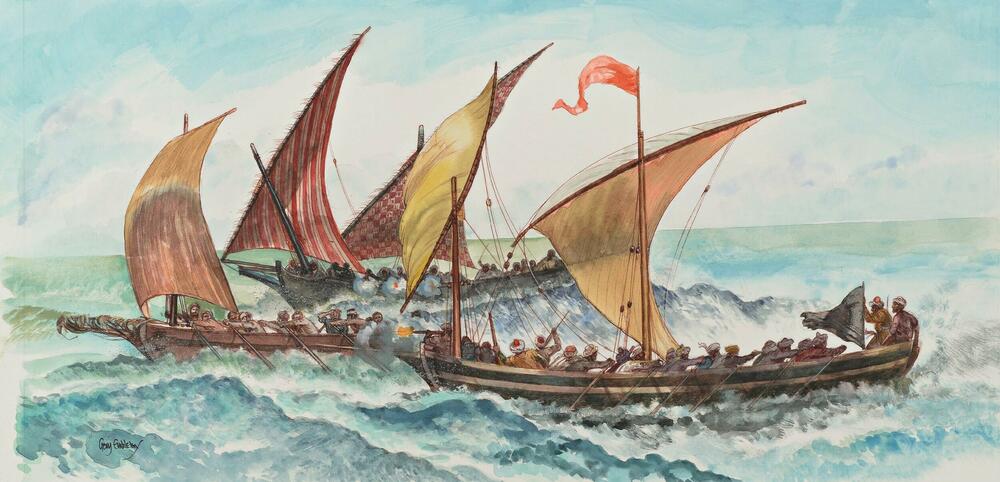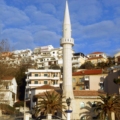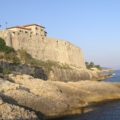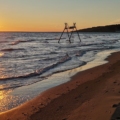Did you know that Ulcinj was the pirate capital of the Adriatic Sea? Imagine sailing through the serene blue waters centuries ago and meeting fierce pirates from a small Montenegrin town. Their raids and fearless crews made pirates in Ulcinj legends of the Mediterranean.
The pirate tradition was a part of the livelihood in this coastal area, which made them experienced and skilled sailors. Ulcinj pirates’ ships were notorious, as they were used in successful manoeuvres to capture merchant vessels, enslave captives, and challenge the navies. For centuries, the Adriatic wasn’t just a trade route, it was a pirate’s playground, and Ulcinj was its heart.
If you want to know more about Ulcinj’s incredible Pirate past, keep reading as we bring you exciting details of this lesser-known element of Montenegrin history.
Piracy in the Adriatic
By the 1600s, piracy in Europe had become a highly profitable profession, which is why many considered it the only viable means of making a living. Many kingdoms, such as England and empires like the Ottomans encouraged and financed piracy. This is why it spread all across Europe, not leaving the Adriatic behind.

Therefore, during this time, pirates sought out strategic locations to facilitate their operations. Ulcinj, with its perfect position to intercept Adriatic trade, became a key point for pirates. Through Ulcinj, they had access to boats which transported wheat and oil from Apulia, meat and cheese from Dalmatia, and luxury goods from Venice.
Ulcinj: A Pirates Town
But how did Ulcinj get to be an essential point for pirates?
It is thanks to the Ottoman presence, which was strengthened after 1571. Their control over the Adriatic eventually led them to Ulcinj. The Ottomans conquered it and used it for the pirates’ adventure. The success of Ulcinj’s pirates was also partially achieved thanks to the support of the powerful Ottoman admirals. The Ottomans used this to strike fear from Italy’s coastlines to the bustling ports of Venice.
The legendary Ottoman admiral Kilich Ali Pasha, himself a former pirate, saw great potential in the local seamen. With his support, the Ulcinj pirates organised, armed themselves, and launched an era of piracy that would last for generations.

During this time, piracy was quite organised. The pirates rarely sailed alone. They typically operated in groups of three to four fast-moving vessels, each equipped with 12 to 22 rowing benches. At the prow of their ships, they mounted a sharp, low-lying metal ram designed to punch holes through enemy hulls with brutal efficiency.
When it came time to board a rival ship, they used ganja, long grappling hooks. They would deploy this weapon to drag vessels close. If brute force wasn’t enough, they used the flamethrowers that could scorch targets from a distance. There is also evidence of homemade bombs filled with tar and cloth.

To hide their origins and confuse enemies, Ulcinj pirates often sailed under the “Barbarian” (Berber) flag. Many believed they were North African corsairs from Tripoli or Algiers. This only added to their mystique and terror. For decades, no Catholic port in the Adriatic or Italy was safe as Ulcinj’s pirates captured ships and took in prisoners to be sold as slaves.
Control over the Adriatic
What is particularly intriguing in the story of Ulcinj’s pirate past is their persistence and success in their actions. Despite Venice’s superior ships and cannons, the pirates regularly slipped past their defences. At one point in 1580, Venice reported 25 ships lost to pirates near Kotor in just a month.
Over time, Ulcinj’s pirates became increasingly aggressive as they achieved considerable success in their actions. The pirates even attacked villas in Italian areas and demanded ransom for nobility. This is why they got the nicknames like “The Whip of Apulia and Sicily.” Even the Ottoman authorities benefited, as the Ulcinj pirates later in history were self-funded, required no salaries, and often shared loot with officials.
Therefore, other cities and states, such as Dubrovnik, had to negotiate their safety, sending “gifts” to Ottoman naval commanders and local pirate leaders. But even bribes couldn’t guarantee safe passage. Venetian and Ragusan merchants often included clauses in their shipping contracts acknowledging the risk of pirate attacks, specifically naming Ulcinj as a particular danger.

This is why in 1665 and 1666, Venice mobilised forces from Boka to Kvarner to destroy Ulcinj’s fleet. However, these clashes were without success. Additionally, the town of Perast, backed by Venice, viewed the Ulcinj pirates as both economic rivals and military threats. Perast had been tax-exempt since 1540 in exchange for protecting Venetian interests, and that included fighting pirates. Small wars broke out between the two communities, with Venice arming Perast militias for surprise raids against Ulcinj.
Read Also: Ulcinj Beaches
Decline of the Pirate Kingdom
The success of Ulcinj’s pirates, although very much independent, began to decline with the fall of the Ottoman Empire. The turning point came in the early 1700s when Sultan Ahmed III issued strict orders forbidding local garrisons from supporting pirates. By 1719, he had even ordered the burning of Ulcinj pirate ships for disrupting trade with Western Europe.

Despite this, Ulcinj’s pirates continued to cause trouble, especially at the beginning of the Napoleonic Wars. But this was short-lived. After Napoleon’s defeat and the Congress of Vienna in 1815, piracy in the Adriatic was finally suppressed. That same year, British forces left the island of Vis, ending the pirate age in the region.
Legacy of the Ulcinj Pirates
Today, Ulcinj is an enchanting coastal town renowned for its beaches and multicultural charm. But locals still tell stories of the gloomy pirate past of the city. And despite all modern amenities, the remains of the pirate republic are still there. By visiting the old city and talking to the older citizens, you will hear all about the pirate republic and entertaining legends of its glorious past.







